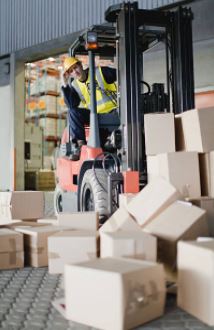The Ultimate Forklift Guide Ontario
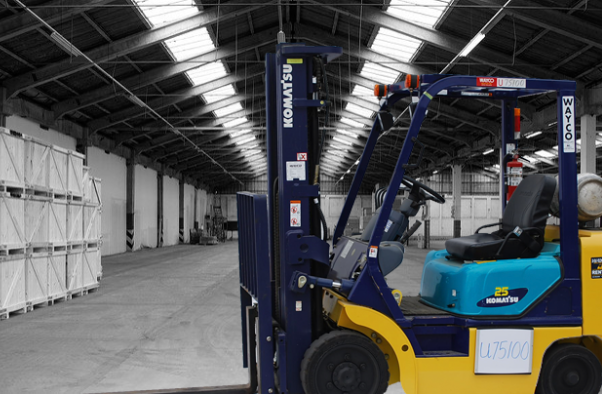
A forklift can be an essential part of most construction or industrial workplaces. It is important however to know how to properly use, operate, and maintain them so that they are operated efficiently, effectively and safely. This ultimate forklift guide is designed to help you understand the legislation surrounding forklifts, know how to safely operate and maintain them, what training is required and how to make your warehouse or workspace forklift friendly. If you have further questions, or are in the market to purchase a new or pre-owned forklift, contact the forklift professionals at Wayco.
The Ultimate Forklift Guide - Contents
Click on the links below to go immediately to the section of the guide that you want, or start at the beginning and work your way through to the end.
1. Forklift Legislation
2. Key Elements for a Health and Safety Program for Forklifts
3. Forklift Hazards - Safety
4. Worker Training
5. Management and Supervisor Responsibility
6. Safe Operating Procedures
7. Maintenance
8. Facility Design
9. Preventing Accidents
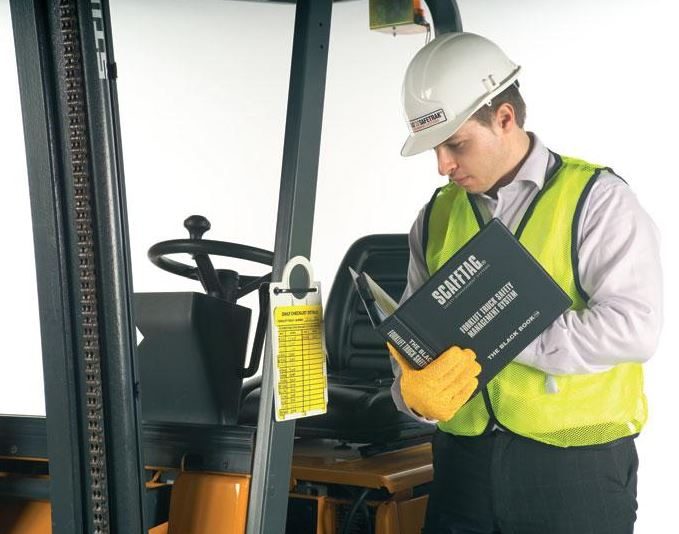
1. Forklift Legislation
You must make sure that if you own, rent or borrow a vehicle for work purposes, it is safe for use and fit for the purpose for which it is intended. The law requires that workplaces are maintained in a condition that is safe and without risk to safety and health. Employers also have a duty to take every precaution to protect their workers.
Employers and employees must comply with all Ontario legislation rules and laws that pertain to lifting devices such as forklifts. Proper information, training, and inspections must be carried out to use the equipment in a safe manner and as per the manufacturer's instructions. In Ontario, no worker shall operate a lifting device, mobile equipment, vehicle or powered machine, tool or equipment, unless he or she is competent to do so. As a competent operator you must also be aware of the legislation that applies to the use of lift trucks.
All three ministry sector regulations (Mining and Mining Plants, Construction Projects, and Industrial Establishments) have provisions that deal with forklifts. By far the greatest numbers are covered by the OSHA (Occupational Safety and Health Act ) Industrial Establishments Reg 851.
1.1 Lifting Device - Clause 51(1)(a) of Regulation 851 requires a lifting device to be constructed and equipped in a way to adequately ensure the safety of all workers. These provisions should be interpreted as requiring the regular inspection and maintenance of powered lift trucks to ensure their safety. The regular inspection should cover the points listed in Appendix IV
1.2 Employers - Clause 25(2)(h) is the most general duty of all, requiring an employer to "take every precaution reasonable in the circumstances for the protection of a worker". Subsections 51(1) and (2) of Regulation 851 are more specific, with provisions that apply to a "lifting device", defined as, a device that is used to raise or lower any material or object and includes its rails and other supports but does not include a device to which the Elevating Devices Act applies. This definition clearly applies to powered lift trucks and should be interpreted broadly as including not just the elevating section of a truck but the entire vehicle.
1.3 Employees - The examination to determine lifting capacity [clause 51(1)(b)] is to be carried out by a "competent person". To be competent, this person must be able to ensure that a powered lift truck is capable of lifting its maximum rated load. The training and experience required to be considered a competent person for the purpose of clause 51(1)(b) is outlined in Section 4 of this Guideline.
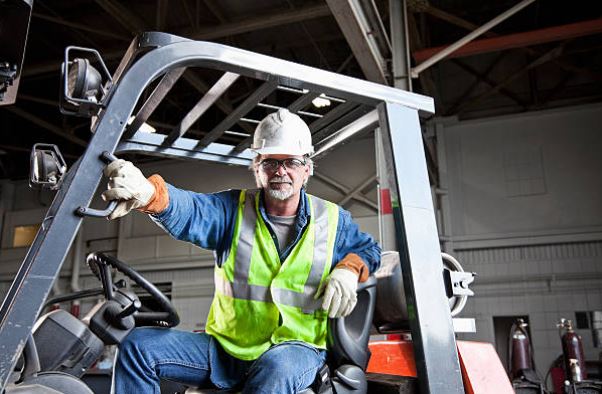
2. Key Elements of a Health and Safety Program for Forklifts
A wide variety of accidents are caused by collisions, shifting loads, tip-overs from lack of an effective safety programs. Workplaces need to keep safety in mind and provide workers and supervisors with adequate training, as well as a safe powered lift truck. The development and implementation of these programs are the first steps towards improving a safe work environment.
Better training for forklift operators is the way, because as a forklift operator you are responsible for accidents. An effective solution is the forklift operator and supervisors should be trained in a powered lift truck safety program that includes the following elements:
- hazard identification
- training (of both truck operators and those working near lift trucks)
- supervision
- operating procedures
- maintenance and repair procedures
- facility design
- lift truck selection criteria.
Your employer is responsible for the implementation of these programs and it is more effective if all workplace employees are involved. Your health and safety committee, where there is one, is involved in the development of rules, monitoring lift truck safety improvements and preventing injuries by identifying the causes of accidents and near misses.
3. Forklift Hazards - Safety
Forklift hazards and control measures are important to consider in order to achieve a safe workplace. A hazard is a condition, practice or substance that has the potential for causing loss, injury, or harm to life, health or property. As an operator you are responsible for recognizing hazards and hazardous situations during the operation of a lift truck. It is essential that you recognize hazards during the planning of your lift, and that you identify required controls. A hazard can be categorized as a health or safety hazard.
Clause 25(2)(d) of the Occupational Health and Safety Act (OHSA) requires an employer to make a worker aware of any hazards in the workplace. An employer must identify all hazards associated with the lift truck and must take measures and procedures to prevent accidents. Identification processes should involve both workers and supervisors and include the following steps:
- Step 1: Identify the ways in which a worker who operates or works around a powered lift truck could be harmed or injured, taking into consideration the equipment that will be used, the jobs to be done and the workplace environment.
- Step 2: Prepare a written report that mentions all the potential sources of harm or injury identified in step one above. This report can be used to inform workers about the hazards in their work (as required by clause 25(2)(d) of the OHSA).
- Step 3: Periodically review the hazard assessment in case there is a significant change in how the work is carried out and make appropriate changes to the written report if necessary.
If you as a worker have any concerns that your workplace does not have enough expertise, advice should be sought from your health and safety committee or other safety specialists. Please feel free to contact our safety specialist if you need further advice.
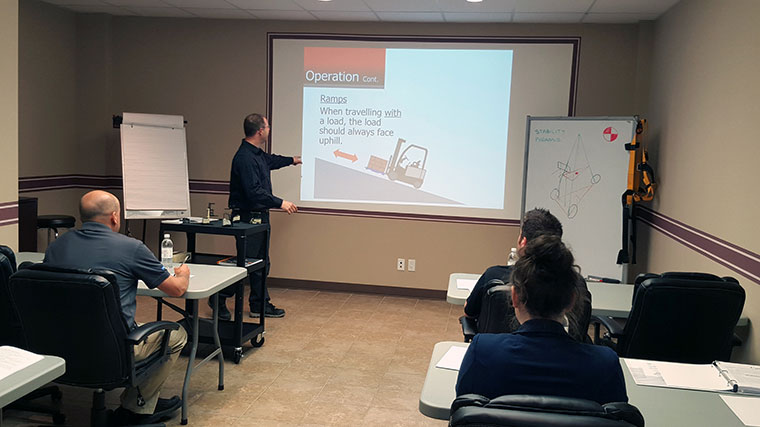
4. Worker Training
OHSA Clause 25(2)(a) places an obligation on an employer to provide information, instruction, and supervision to a worker to protect the health or safety of the worker. A lifting device can only be operated by a competent person, therefore training must be provided to gain knowledge and experience. They require both knowledge of any potential or actual danger to health or safety in the workplace and experience to organize the work and its performance. Through training an operator should learn:
- the fundamentals of powered lift trucks
- how environmental conditions affect lift truck performance
- basic lift truck operating skills
- the rules and practices for safe lift truck operation.
Your training should include practice sessions on load handling, maneuvering, traveling, stopping, and starting and it should be carried out by a qualified trainer. In addition to forklift operator training, the employer is also responsible for workers who work in the vicinity of lift truck. There are other worker training courses that can provide a safer workplace for workers such as pedestrian awareness, WHMIS, Propane exchange handling, lockout tagout and battery training.
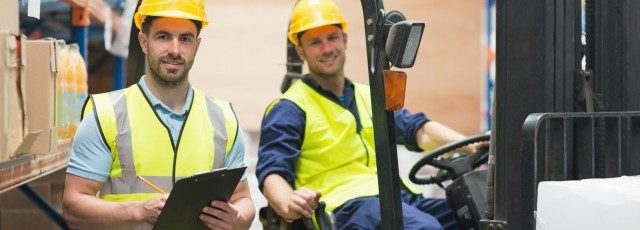
5. Management and Supervisor Responsibility
Each year, thousands of injuries that occur during forklift usage are caused by lack of training or supervision. One of the best ways to avoid injury, is for the employer to ensure all their workers who use, supervise, or manage the use of work equipment have received adequate and up to date training. Many supervisors or managers have never driven a forklift themselves, so it can be difficult for them to fully understand and be aware of the specific issues that operators face. Supervisors are not required to undergo operator training, but it would be wise to take the course making it easier to identify good or bad practices.
OHSA Clause 25(2)(c) states that an employer must appoint a competent person as a supervisor. This means someone who, through training and experience, knows the hazards of the lift truck that is being used, the load being handled and the environment the truck is being used in. Identifying unsafe acts and conditions and implementing corrective measures must be identified by a competent supervisor. It is everyone's duty to identify all hazardous situations and report or correct them immediately.
A typical managers’ and supervisors’ course will cover the following topics:
- Identify the importance of the supervisor’s role
- Discuss the duties and responsibilities of the employer, worker, and supervisor
- Discuss the role of the health and safety representative and the Joint Health and Safety Committee member
- Recognize the importance of working as a team
- Identify how the supervisor fits into the Internal Responsibility System
- Explain the role of the WSIB and Ministry of Labour
- Support the rights of workers
- Explain how to recognize, assess, control, and evaluate hazards
- Handle health and safety concerns
- Recognize how to obtain health and safety assistance
- Identify health and safety resources
- Motivate employees to work safely
Expectations placed on supervisors should always be high to ensure the proper safety precautions are being taken in the workplace. Their role is to monitor and ensure standards are maintained.
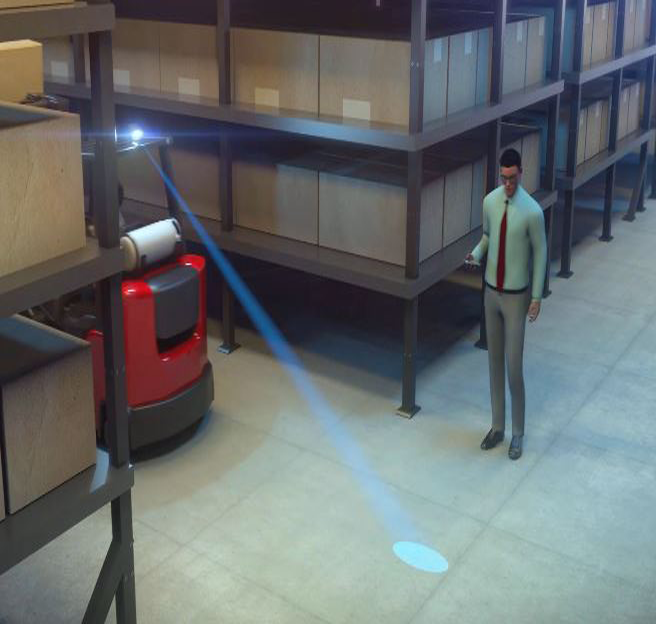
6. Safe Operating Procedures
Employers now have a tool for ensuring safe lift truck operation procedures, Canadian Standards Association CSA B335-15 Safety standard for lift trucks which includes operator training, qualifications for trainers,work loads, workplace design, safety education and maintenance and inspection. The purpose of this standard is to promote lift truck safety and minimize the risk of injury to all workers.This Standard can also be used as a guide for Canadian federal, provincial, and other regulatory bodies in the development and promulgation of appropriate health and safety legislation and directives concerning lift trucks. This Standard also outlines recommended qualifications for trainers and maintenance technicians.
Workers, Operators, Supervisors, and managers need to recognize hazards associated with the equipment and the environment they are used in because forklift accidents are preventable and unacceptable.
Key essential elements of a lift truck safety program consist of:
- Explaining competency requirements
- Identifying hazards

